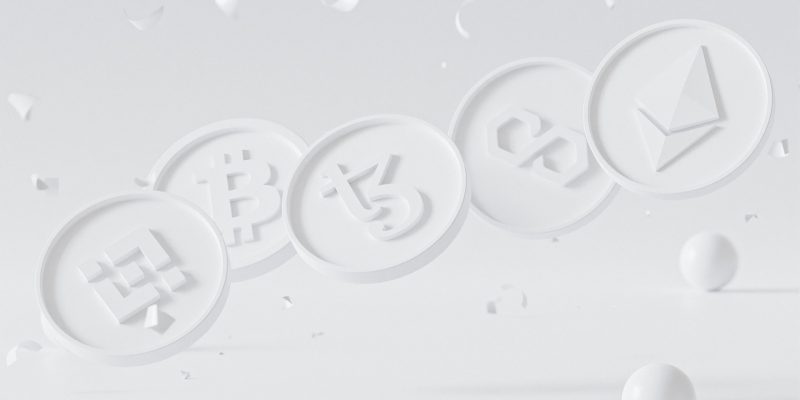The cryptocurrency market has ushered in a transformative era in finance, challenging conventional concepts of currency and ownership. Amidst this dynamic landscape, crypto tokens have risen to prominence, offering diverse applications and reshaping industries. This article endeavours to furnish readers with a holistic grasp of crypto tokens, their pivotal role in the digital economy, and their capacity to revolutionize sectors far and wide.
Tune in to a free education firm and learn about investing which can enhance your investing experience. Make sure you start learning now!
Understanding Crypto Tokens
Crypto tokens are digital assets built on blockchain technology. Unlike cryptocurrencies like Bitcoin, which serve primarily as digital currencies, tokens have a broader range of applications. They can represent assets, rights, or utilities within a decentralized network. Token standards, such as Ethereum’s ERC-20 and ERC-721, provide a common framework for creating and managing tokens. Use cases for crypto tokens are diverse, ranging from facilitating transactions within decentralized applications (DApps) to representing ownership of physical assets.
Tokenization of Real-World Assets
Asset tokenization is a groundbreaking concept that involves converting real-world assets, such as real estate, art, or stocks, into digital tokens on a blockchain. This process brings several advantages, including increased liquidity, fractional ownership, and 24/7 accessibility to assets that were previously illiquid and exclusive. However, challenges related to legal and regulatory frameworks must be addressed for the widespread adoption of asset tokenization.
Types of Crypto Tokens
Crypto tokens can be categorized into various types based on their characteristics and use cases.
- Utility Tokens vs. Security Tokens: Utility tokens provide access to a specific product or service within a blockchain ecosystem, while security tokens represent ownership in an underlying asset or company, often subject to regulatory compliance.
- Payment Tokens vs. Governance Tokens: Payment tokens, like Bitcoin, are primarily used for transactions, while governance tokens grant holders the ability to participate in decision-making processes within a decentralized network.
- Non-Fungible Tokens (NFTs): NFTs are unique digital assets that represent ownership of one-of-a-kind items, such as digital art, collectibles, or virtual real estate. They have gained substantial attention for their role in digital ownership and provenance.
- Stablecoins: Stablecoins are designed to maintain a stable value by pegging their worth to assets like fiat currency or commodities. They serve as a bridge between the volatility of cryptocurrencies and the stability of traditional currencies.
The Tokenization Revolution
The tokenization of assets and the broader adoption of crypto tokens are disrupting traditional financial systems. This revolution is driven by several factors:
- Increased Liquidity: Tokenized assets can be traded on secondary markets 24/7, increasing their liquidity compared to traditional assets.
- Global Accessibility: Anyone with an internet connection can participate in the token economy, democratizing access to investments and financial services.
- Ownership Redefined: Tokenization redefines ownership, making it easier for individuals to hold fractional shares of high-value assets.
- Regulatory Challenges: As the tokenization landscape evolves, regulators are grappling with how to oversee this emerging market while protecting investors and maintaining financial stability.
Investment Strategies with Crypto Tokens
Investing in crypto tokens requires careful consideration and understanding of the market dynamics. Common strategies include:
- Holding vs. Trading: Some investors opt for a long-term “buy and hold” approach, while others engage in active trading to take advantage of short-term price fluctuations.
- Diversification: Diversifying investments across various crypto tokens can help mitigate risks associated with the high volatility of the market.
- Risk Assessment: Investors should be aware of the risks associated with crypto assets, including market volatility, regulatory changes, and cybersecurity threats.
Future Trends in Tokenization
The future of tokenization is promising, with several trends on the horizon:
- Decentralized Finance (DeFi): DeFi projects continue to innovate, offering decentralized lending, borrowing, and trading services that challenge traditional financial intermediaries.
- Blockchain Technology: The underlying blockchain technology will continue to evolve, providing a secure and transparent infrastructure for tokenization.
- Interoperability: Efforts to create cross-chain compatibility and interoperability between different blockchain networks will expand the token ecosystem.
- Regulatory Clarity: As governments around the world develop clearer regulations for the crypto space, institutional adoption is likely to increase.
Conclusion
In conclusion, crypto tokens represent a significant evolution in the world of digital assets. They offer diverse use cases, from facilitating transactions to transforming ownership and investment. As the tokenization revolution continues to unfold, it is essential for investors and enthusiasts to stay informed, navigate the evolving regulatory landscape, and explore the potential that crypto tokens hold for the future of finance and beyond.
DISCLAIMER: This article is a partnered post and does not substitute for professional advice or help. Any action you take based on the information presented in this article is strictly at your own risk and responsibility.
Feature Photo by Rodion Kutsaiev on Unsplash






Comments